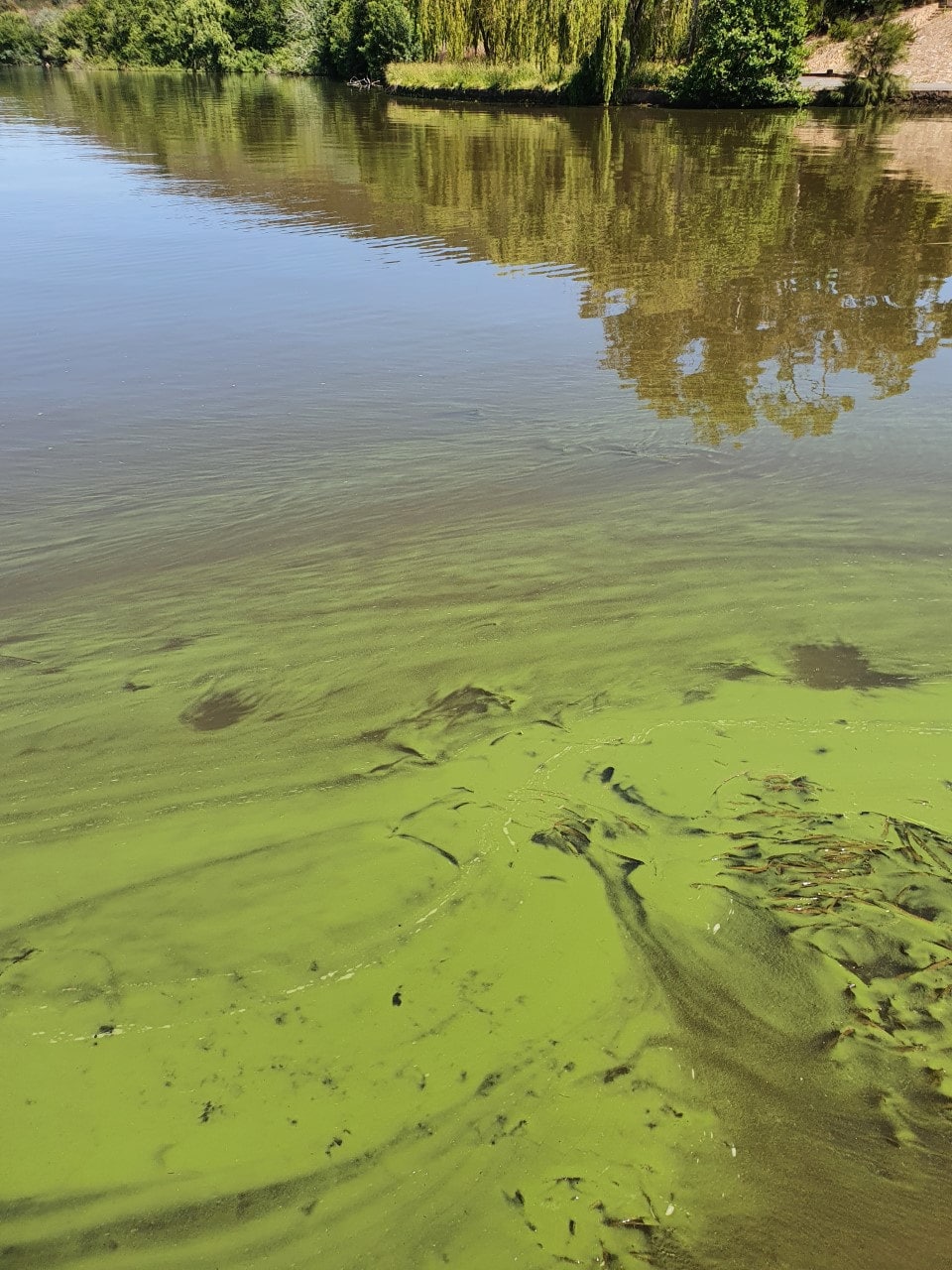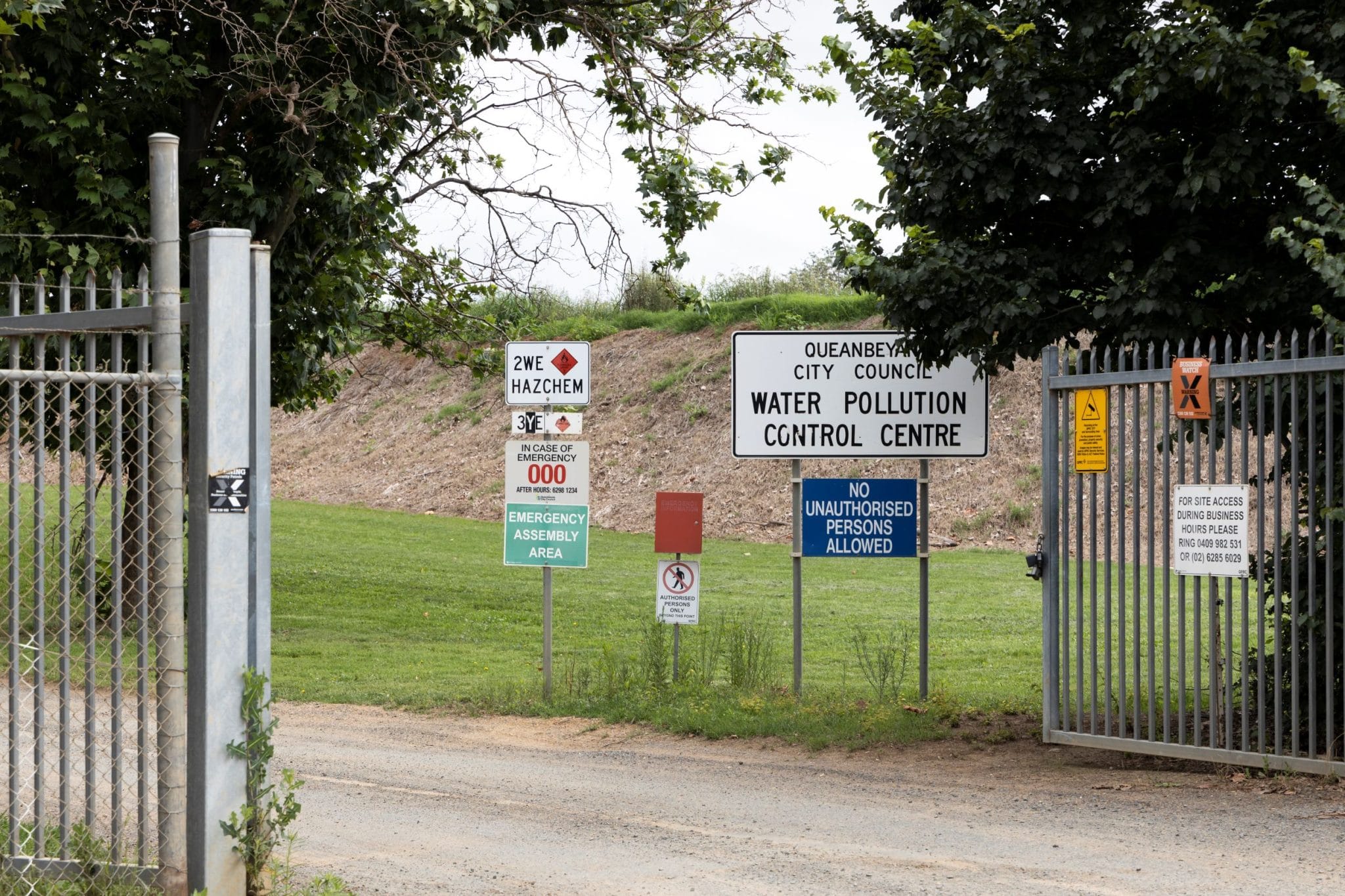A water quality expert insists that Queanbeyan’s proposed new sewage plant must be designed to remove algae-stimulating phosphorus from effluent entering Lake Burley Griffin.
The best way to ensure concentrations do not harm the Lake, says Dr Ian R. Falconer, former chair of the ACT and Region Catchment Management Co-ordination group, is for the ACT Environment Protection Authority (EPA) to tighten the discharge licence for phosphorus concentration.
“The current plant removes much more phosphorus than the licence requires,” Dr Falconer said. “What I ask is that a new licence sets a standard for plant operation – if you like, a benchmark for the future.
“It would also ensure that the new plant performed as well as the old plant does. Without a change in the licence, the new plant could perform according to the licence, which would be a disaster for the Lake. Licence standards require adherence, hence they set limits on plant discharge of all potentially harmful organisms and chemicals.”

A new sewage plant for Queanbeyan
Built in the 1930s, the Queanbeyan sewage plant is nearing the end of its life, and is no longer considered fit-for-purpose.
Constructed when 40,000 people lived in Queanbeyan, the plant is operating above its capacity, and must be upgraded to serve the town’s bigger population (60,000 residents, expected to grow to 75,000).
Nor, Queanbeyan-Palerang Regional Council says, does it conform to industry best practice for protecting public health and the environment.
The new plant, a QPRC spokesman said, would deliver much higher levels of treatment and reliability, and provide a significant benefit to the Molonglo River catchment.
It will use modern treatment technology to remove phosphorus, and the upgrade includes $12 million worth of additional facility the ACT Government requested to improve the reliability and to reduce the amount of nutrients along the Molonglo River.
The phosphorus problem
Dr Falconer believes, however, that the present licence conditions are inadequate to effectively regulate phosphorus entering Lake Burley Griffin.
He has raised the issue with the ACT EPA, but, he says, the agency believes the licence is adequate, and do not intend to amend it.
A spokesperson for the ACT EPA said the limits in the current licence were appropriate for the current plant; the current phosphorus limits of the Queanbeyan sewage plant were comparable with similar NSW sewage plants.
The sewage plant discharges treated effluent into the Molonglo River upstream from Lake Burley Griffin, contributing 30 per cent of nutrients to the Lake.
Although the sewage plant is run at a lower level – removing significantly more phosphorus than the licence requires, QPRC states – Dr Falconer says the licence allows the plant to discharge excessive phosphorus, sufficient to severely harm the Lake.

The phosphorus in the effluent makes blue-green algae grow, he explained. “These algae are always present, produce toxins, and are subject to health regulations for the safety of Lake users… It is essential that the sewage effluent has minimal concentrations.”
The licence permits a 50th percentile of 0.2 mg/L phosphorus and a 90th percentile of 0.3 mg/L for a rolling three-month period, with a load of 6Kg per day discharged.
If the plant were operated at the maximum level, Dr Falconer predicts the discharge would cause persistent toxic blooms of blue-green algae in the Lake every dry year.
He argues effluent quality from the new plant should be a 50th percentile of 0.04 mg/L phosphorus (matching river quality) with a 95th percentile of 0.06 mg/L, allowing exceedances during heavy rainfall.
The ACT EPA said the quality of effluent discharged by the plant was on average much better than that set in the Environmental Authorisation. The plant had discharged, on average over the last five years, phosphorus at 0.1mg/L which was lower than the Authorisation limits.
The plant was upgraded in the 1980s because its phosphorus discharge caused repeated blue-green algal blooms in the Lake; now, Dr Falconer said, the plant has a good quality discharge despite its age, and the former recurrent algal blooms have diminished markedly.
“Fortunately, the Queanbeyan engineers operate the old plant to discharge well below [the maximum] concentration, and as a result, in most years, the Lake is OK,” Dr Falconer said.
In a typical year (2016), he explained, the plant discharged on average only 0.09 mg/L of phosphorus with a load of 0.7 kg/day, well below the licence limits.
While no treated sewage effluent should be discharged into rivers or creeks, Dr Falconer states that treated effluent can benefit the Lake during drought, so long as quality is high and orthophosphate (dissolved phosphorus) is low.
The Queanbeyan sewage plant is not the only source of phosphorus, QPRC notes; the chemical also comes from urban and rural stormwater runoff and from riverside agriculture.
According to Dr Falconer, QPRC argue that meeting tighter conditions for phosphorus discharge would cost the taxpayer money; since the National Capital Authority are responsible for the Lake, they should pay any additional cost. Conversely, again according to Dr Falconer, the NCA’s position is they cannot provide any money to an NSW entity for infrastructure. Neither QPRC nor the NCA would comment on this issue.

Dr Falconer believes the ACT Government and National Capital Authority should help QPRC meet tighter conditions for phosphorus discharge, as the sum is relatively trivial and the benefit long-lasting.
“It will not cost appreciably more to greatly improve the proposed plant by precipitating phosphorus at the final stage by the use of iron salts rather than [the proposed] alum, but the cost will be to Queanbeyan, rather than to the ACT or NCA, unless some agreement can be reached.
“Once the new plant is built, modifying it is expensive, and it is designed to provide for double the population of the current town inside the next 15 years. This doubles the potential effluent load going into the [Molonglo] river.”
Environmental impact statement
Last year, QPRC lodged a draft environmental impact statement (EIS), which the ACT Government must approve, as the sewage treatment plant and parts of the transfer pipeline are in the ACT. The EIS provides performance values for the new plant for key water quality parameters, including phosphorus.
Following the ACT Government’s assessment in March 2021, QPRC must prepare a revised EIS by September; a spokesperson said it would provide the revision early this year.
The NCA also had some concerns about the plant’s potential to impact water quality: as Queanbeyan’s population grew, the volume of treated water discharged into the river would increase, but the EIS did not address the impact of more phosphorus. The EIS only considered the receiving waters of the Molonglo River, and did not address the potential impact to water quality in Lake Burley Griffin.
Similarly, in the ACT Government’s scoping report, the Conservator of Flora and Fauna said the EIS must include a rigorous assessment of impacts to waters (particularly Lake Burley Griffin) and the plant must achieve high quality effluent.
“Sewage treatment plants are essential utility services for health and sanitation purposes,” an ACT Government spokesperson said. “The operation of a plant needs to balance achieving desired sanitary public health conditions for the human population and the discharge of treated effluent that affects downstream water quality.
“The objectives of the Environment Protection Act 1997 require people engaging in polluting activities to make progressive environmental improvements. On this basis it is envisaged that the future upgraded Queanbeyan Sewage Treatment Plant would improve upon water quality compared to current plant, and based on a continuous improvement process, this would be reflected in the Authorisation limits.”
A QPRC spokesperson said the revised EIS would include hydrodynamic modelling of Lake Burley Griffin to better inform the EIS of how the upgraded plant and discharge would affect water quality. The modelling accounts for average, wet, and dry years, as well as possible impacts from climate change.
The NCA is researching how point sources such as the sewage plant contribute to blue-green algae in the Lake. It will work with all stakeholders to understand and manage water quality challenges.
The community will be able to comment on the EIS before the ACT Government finalises and approves it.
Get all the latest Canberra news, sport, entertainment, lifestyle, competitions and more delivered straight to your inbox with the Canberra Daily Daily Newsletter. Sign up here.



